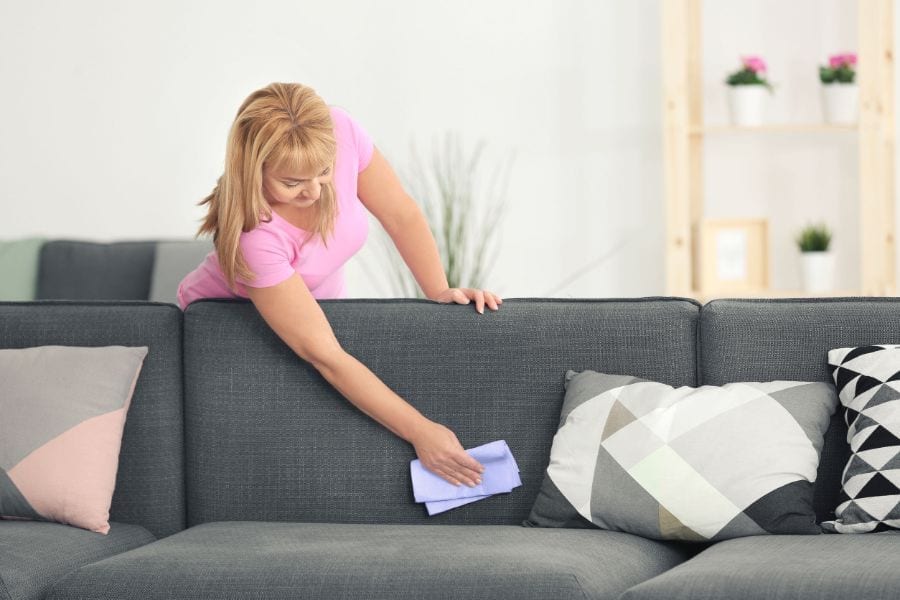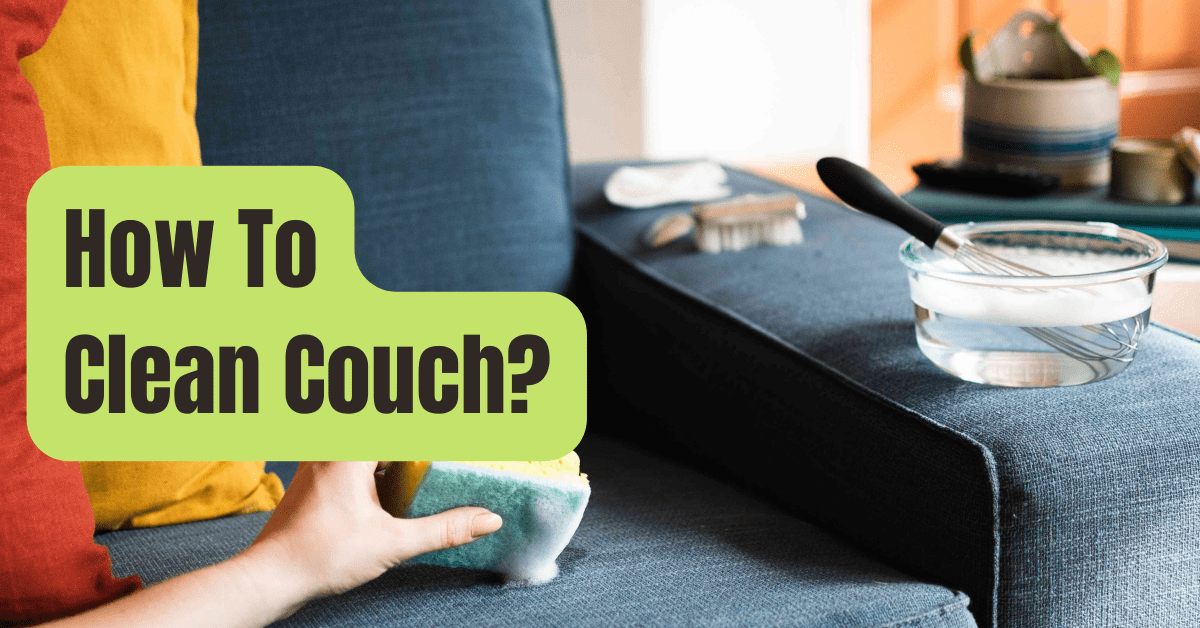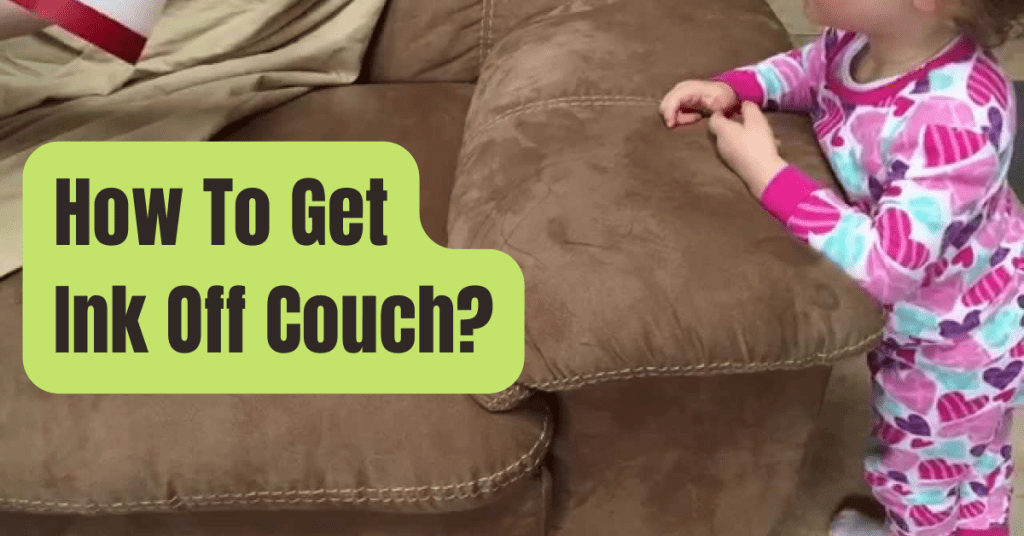Fabric couches, sofas, and chairs are popular because of their comfort and durability, but even the best-treated fabric will need to be cleaned once in a while to stay in good shape.
Most sofas should be thoroughly cleaned once or twice a year, but fabric furniture may need a bit more attention, such as cleaning once a month and addressing spills and stains right away.
Our Pros know how to clean fabric sofas and get them looking like new, whether you’re ready for a regular cleaning or need assistance avoiding an accidental spill from creating a permanent stain.
What Is The Best Way To Clean A Fabric Couch?
The manufacturer’s instructions should be the first item you look at.
Many fabric sofas have been pre-treated to avoid stains, and certain cleaning methods may diminish the efficacy of the protection or even void the guarantee.
Cleaning instructions are included on the label of many upholstered couches.
The following are some of the most popular cleaning codes and their definitions.
The label for your sofa is normally fastened below the cushions.
Codes for Cleaning Fabric Upholstery
| W | On this fabric, use a water-based cleaning. |
| S | Use a cleaning that is solvent-based (dry clean only) |
| W/S | Cleaners that are water-based or solvent-based may be used. |
| X | Only vacuum or brush clean instead of using water or solvent-based cleansers. |
Always spot check an inconspicuous area before washing your furniture.
This will guarantee that the fabric’s finish is not harmed.
Scrub a tiny area with a white cloth and your preferred cleanser to ensure the color won’t run.
If the color of the fabric rubs off, don’t use the same cleaning solution on the whole couch.

What To Do If You Don’t Have A Machine To Clean Your Upholstery
Steam cleaning a fabric couch is a terrific method to get rid of dirt and give it a new lease of life, but it isn’t the only option.
A brush, vacuum cleaner, and a little elbow work are all you need to clean a sofa.
Follow these easy procedures to clean a fabric sofa:
- Remove any crumbs or loose debris with a stiff-bristled brush.
- Using the brush attachment, vacuum the sofa.
- Using an appropriate cleaning solution, spot treat stubborn spots.
- Allow the sofa to dry naturally.
Cleaning Couch Cushions
If the cushions on your upholstered couch are detachable, they may be washed individually.
First, read the label’s cleaning instructions.
Fabric cushion coverings may be machine washed in certain cases.
Remove the covers and wash them if this is the case with your cushions.
To clean foam cushion pads, place them in a warm bath with a little quantity of mild detergent recommended for handwashing.
Immerse the cushions in water and push them to incorporate the soap and water into the foam.
Any stains should be rubbed out, and any soap residue should be rinsed away with clean water.
Allow them to air dry, rotating them every now and again to avoid water being trapped within or under the cushion.
If you don’t have time to wash your pillows, take them outdoors and beat them up.
Any dust and grime will be removed as a result of this.
Treat any stains with an appropriate cleaning solution, or steam clean sofas marked with a W or WS code.
Steam cleaning is not possible on X or S-marked couches.
You now know how to clean the upholstery on your couch at home!
Pro Tip: To keep your whole home fresh and clean, learn how to clean your cushions as well!
How Do You Clean A Sofa Thoroughly?
A basic cleaning isn’t always enough, and your sofa may need a full cleaning.
Stains may be caused by children, dogs, or even clumsy adults, and they must be removed.
Whether you’re cleaning and disinfecting a used couch or giving your family sofa some much-needed TLC, here’s how to make it appear brand new.
- Remove crumbs, grime, and hair from the sofa by brushing it.
- To clean more completely, use a vacuum attachment with a brush attachment.
- If possible, remove the cushions and clean them individually.
- Allow 20-30 minutes after sprinkling baking soda around the couch.
- Baking soda should be vacuumed up.
- Stains should be treated on the spot.
- Allow the sofa to dry naturally.
Pro Tip: Have you finished washing your couch? Next, learn how to clean your mattress.

Fabric Couch Cleaner (DIY)
There are a lot of specialty fabric cleaners on the market, but you don’t have to spend a lot of money to make your couch look nice.
These homemade cleansers may be used on a variety of materials.
Simply check the label and test an inconspicuous area first, and don’t forget to check the cleaning label on your sofa to ensure you’re using the right solution.
What is the best way to clean a fabric couch with vinegar?
White vinegar is an excellent stain remover that is safe to use on most materials.
As a result, cleaning a fabric couch organically is perfect.
Make the following solution and blot the stain — don’t wet the couch or rub or you’ll spread the stain.
- 1 cup of hot water
- 1 cup vinegar (white)
- 1 teaspoon dish soap (optional)
How to use detergent to clean an upholstery couch
Always use a safe and adequate detergent for your cloth.
You may use a light soap meant for hand cleaning or buy upholstery detergents.
Make the following solution and use a sponge to apply it to the stain.
Make sure the stain isn’t too moist.
After the stain has lifted, dab with clean water to remove the detergent and dry the remaining moisture with paper towels.
- 2 cup water
- 1 teaspoon dishwashing liquid
What Is The Best Way To Clean A Fabric Couch Without Using Water?
Baking soda, particularly on wet stains, is one of the greatest methods to remove grime and stains.
Leave for 20-30 minutes after sprinkling over the area (or if the stain was still wet, until the baking soda has dried).
To get rid of the baking soda, vacuum it up.
Dry cleaning cloths may also be used to remove dried-on stains.
These cloths have been pre-treated with a dry cleaning solution and are convenient to have on hand.
Follow the label’s directions.
Most dry cleaning cloths dissolve down stains by gently rubbing them.
If the cleaning solution requires heat activation, heat the area with a hair drier.
How to Clean a Couch
Using a carpet cleaner or a specialised couch cleaner is the simplest method to shampoo a sofa.
Start by cleaning the sofa thoroughly to get rid of any stray dirt.
Fill the cleaner with water and detergent according to the manufacturer’s recommendations.
Avoid getting the sofa too wet, since this may lead to damp and mildew issues if it doesn’t dry quickly enough.
To remove as much water as possible, use the cleaner’s suction capability.
Once you’ve completed cleaning, wipe away any surplus water with old towels to speed up the drying process.
Replace the cushions after allowing the couch to air dry.
By circulating air more quickly, a fan may assist speed this process.

What Is The Best Way To Clean Your Sofa Using Steam?
A steam cleaner is another excellent technique to clean a couch.
Because these machines just use heat and water to clean, they are suited for a wide range of materials.
To make the cleaning simpler, use a steam cleaner with an upholstery attachment.
To prevent burns, follow the directions on how to operate the equipment and remain out of the range of hot steam.
Keep in mind that heat rises, so avoid leaning over the applicator when using it.
It could be better to move the sofa away from the walls and into a more open space so you can work around it.
Start by removing cushions and steam cleaning one side at a time to clean a fabric couch using a steamer.
Turn them over and wipe the opposite side after allowing each side to dry.
This keeps them from stinking musty.
Instead of continually blasting one area with steam, use quick strokes with the steamer attachment.
The sofa will not get soggy as a result of this.
After that, clean the sofa’s frame.
Do this in tiny portions to ensure that each area is completely cleaned and that no detail is missed.
Before replacing the cushions, let the sofa air dry.
A nearby fan may help speed up the process.
How Do You Clean A Sofa?
Steam cleaning is a good way to disinfect a couch, but if you don’t have one or don’t want to pay a cleaner, there are alternative options.
Rubbing alcohol is an excellent option since it can destroy a broad range of germs and diseases.
- rubbing alcohol (two cups)
- 1 quart of water
In a spray bottle, combine all of the ingredients and softly sprinkle the sofa.
Make sure it doesn’t become too moist.
If at all feasible, remove the cushions and spray the frame and both sides of the cushions individually.
Allow for air drying of the sofa and cushions.

How Can You Get Stains Out Of A Fabric Sofa?
Stains on the sofa are a common occurrence.
Stains may be caused by a variety of things, including food, drink, dirt, and more.
Most food and dirt stains may be removed using the procedures given above, but other stains need further treatment to be entirely removed.
How can I remove water stains from my couch?
If your sofa fabric isn’t water-resistant, it can have water marks if you spill anything on it.
In a spray bottle, combine half a cup of white vinegar with two cups of distilled water and softly sprinkle the stain.
Begin at the outside of the stain and work your way within.
To prevent becoming too wet and to pull out the original markings, blot the area carefully with a microfiber towel.
To prevent a fresh stain from appearing, immediately dry the area using a fan or hair dryer.
How do you remove grease marks off a couch?
Dish soap is the greatest approach to get rid of grease stains.
It’s designed to rapidly and efficiently cut through oil.
Simply mix a teaspoon of detergent with 2 cups of water and use a towel or sponge to wipe the stain.
Use a dry cleaning cloth instead of a water-based cleaner if you can’t use a water-based cleaner on your fabric.
These cloths are additionally coated to quickly cut through oil.
Pro Tip: Paint on your fabric? Here’s how to get it out.
Now is the time to learn how to clean it!
To Sum It Up
It doesn’t have to be a catastrophe if you get a stain on your fabric sofa.
Although cleaning upholstered furniture may seem difficult, with the Pros on your side, it’s a breeze!
Cleaning your sofa as part of a spring cleaning regimen will also help prolong its life and keep it looking fresh for years to come.










